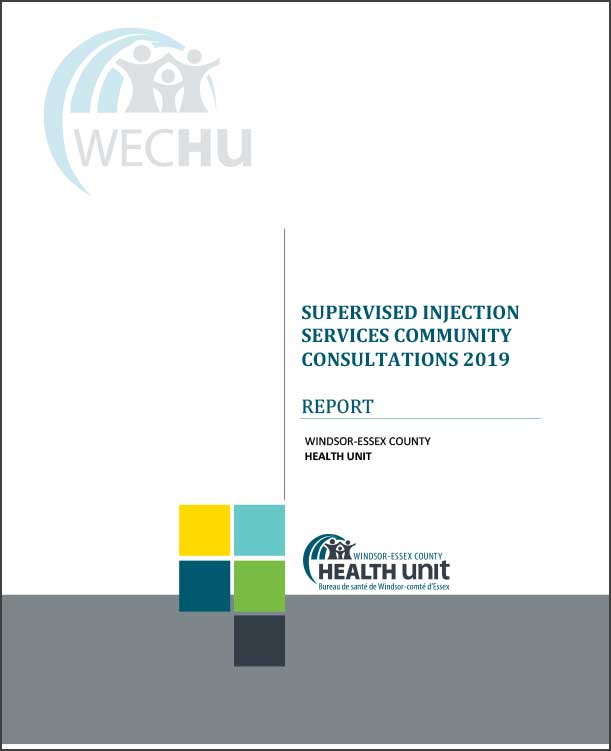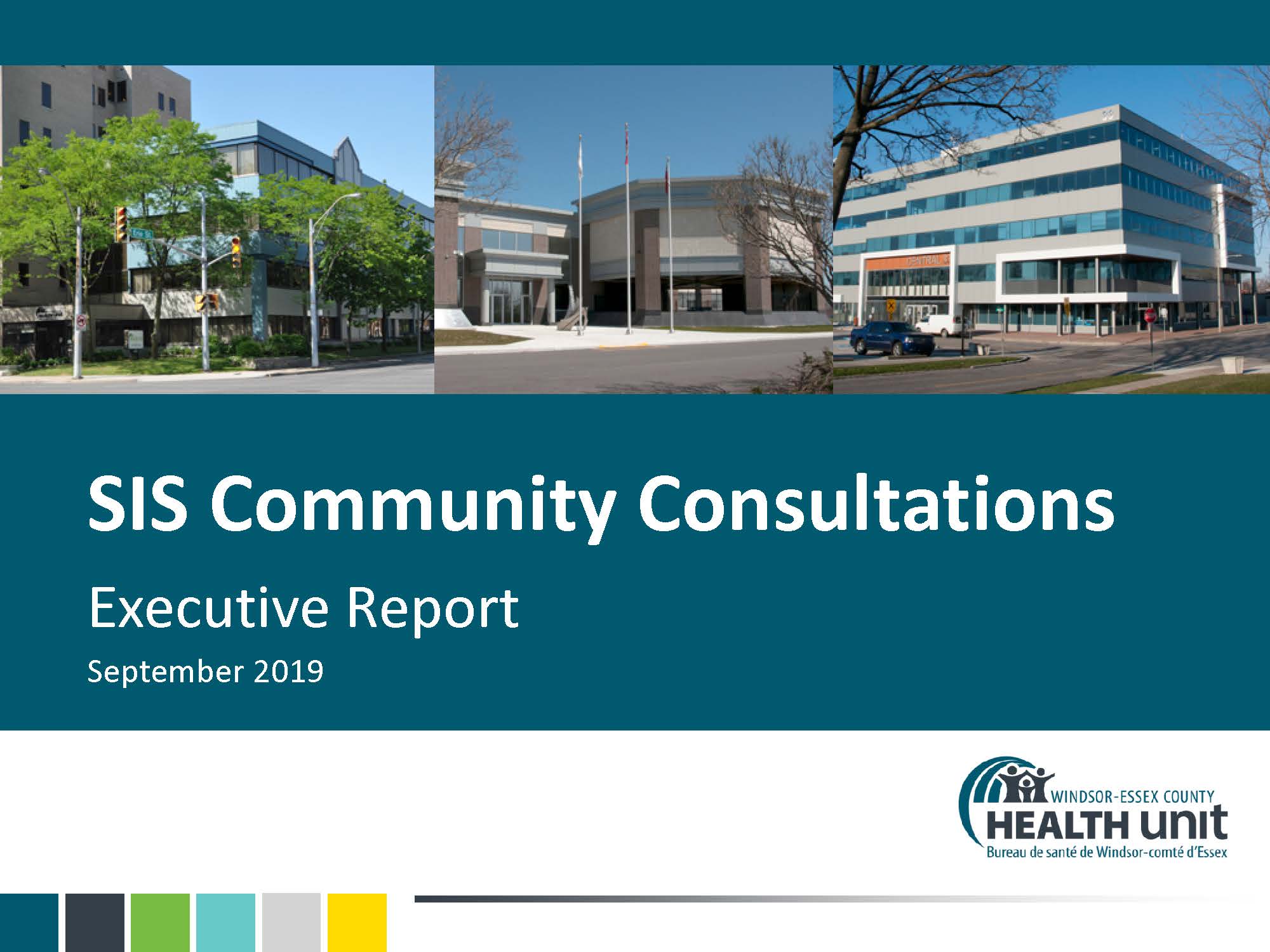Executive Summary:
Windsor and Essex County (WEC) is facing increased morbidity and mortality rates related to the use of opioids and other drugs. Supervised injection sites or services (SIS) have the potential to address public health issues such as the discarding of needles in public spaces and the prevention of deaths related to overdoses.
As such, the Windsor-Essex County Health Unit (WECHU) sought to examine the need for and acceptability of SIS in WEC by conducting a survey open to the general public, interviews and focus groups with key informants and stakeholders, and face-to-face surveys with people who inject drugs (PWID). This report provides the results from the community consultations to inform planning for services for people who use drugs.
Overall, participants from the community focus groups and interviews recognized there is a drug crisis in WEC and that efforts must be made to address the issue. Participants also acknowledged that stigma is a barrier for people with addictions to access services. Many emphasized the need for a comprehensive approach to drug use, and that resources should be focused on treatment, rehabilitation, mental health supports, education, and harm reduction efforts. They also communicated the need for a coordinated and united effort by all community leaders.The WEC community consultations invited members of the community to share their perceptions of SIS, including benefits, concerns, and strategies to mitigate identified concerns. The consultations also sought to explore potential clients’ willingness to use SIS and their preferences for the design, location, and services offered by SIS.
A majority who completed the community consultation survey supported the implementation of SIS in WEC. They perceived that offering SIS is a compassionate and non-judgmental approach that could address some of the harms related to substance use, namely preventing overdose-related deaths and improving public safety by reducing the number of discarded needles and people injecting in public spaces. Additionally, SIS were seen as an opportunity to engage people who use drugs and to help them facilitate access to medical and social supports, such as rehabilitation and housing.
There was a high level of interest from PWIDs surveyed for SIS. A majority indicated that they would consider using SIS, citing reasons such as having access to sterile injection equipment and being able to prevent and treat overdoses. Many reported they were willing to walk to SIS, and identified preferred areas for the location of SIS, particularly in Windsor’s downtown core.
In operating SIS, participants in the community groups and interviews emphasized the need to ensure that SIS have sufficient and sustainable resource capacity to provide comprehensive services. As well, they indicated that SIS should reflect the needs of diverse populations and be provided in a culturally safe environment.
While many supported SIS, community members raised concerns about the impacts of SIS on public safety and the local economy. Specifically, there were concerns about how SIS could contribute to loitering on the streets near the site and about its effects on surrounding property values, the safety of children, businesses, and the general reputation of the community. Additionally, there were concerns that SIS, as a harm reduction approach, would condone drug use and may lead to more drug-related activities, including increased use and trafficking. Some also raised concerns about the efficacy of SIS and the capacity to provide SIS in a timely, safe, and comprehensive manner.
Participants in the community focus groups highlighted two strategies to address concerns and challenges related to SIS:
- public education regarding addictions, harm reduction, and SIS, and
- continuous, open, and representative dialogue regarding SIS.
The findings from the community consultations indicated the importance of consistent, transparent, and open communication throughout the design, implementation, and evaluation of the SIS. It is essential to have formal feedback mechanisms in place for major concerns and questions to be addressed in a timely manner.
It is also evident through the consultations that drug use affects all in the community and that SIS are needed in WEC, particularly in Windsor, but also in Leamington. This is further supported by local data regarding opioid and substance use. Nonetheless, as the consultations revealed, there are concerns and challenges related to the implementation of the SIS that need to be considered by organizations and agencies looking to provide this service. Continuous engagement and evaluation of SIS is critical to addressing these concerns and challenges and to build trust and support in the community.



